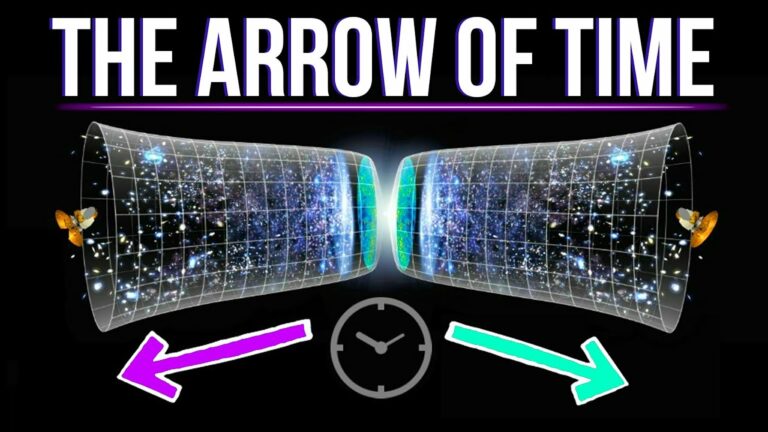The Arrow Of Time: Why Does Time Flow In Only One Direction?
We all know that time behaves as a river: it is something that flows uninterrupted, always in the same direction, from the past to the future. It looks like that time has an “arrow” that points always forward. But why is it like that? What’s the origin of this “preferential direction”?
The past and the future look very different from each other: in fact, we can remember the past, but we cannot do the same with the future. We can’t go back into the past, but we can’t avoid getting older. We can stay still in space, but we can’t do the same with time: time cannot be stopped.
The difference between past and future is clear when we watch this video. ( We immediately realize that we are watching something going in the wrong direction: somebody reversed the direction of time, there is no doubt about that.
Similarly, we also know that we will never see something like that happening in nature. However, when we talk about physics, we don’t see this distinction between past and future: the fundamental equations of physics do not have a preferential direction in time, there is no arrow. Time is just a variable used to label different instants, but there is no preferential order among those instants.
Let’s imagine a very simple system consisting of two marbles. If we watch a video of the collision between these two marbles, we have no way to tell if the video is going forward or backward in time; we can’t tell which is the past and which is the future. The collision is described by equations that allow us to determine the trajectories of the marbles at any instant, but these equations are valid to calculate positions and velocities both in the past and in the future. So, if we want to determine the trajectories of the marbles, we can do it both forward and backward: the equations are still the same, time is totally symmetrical here.
But then why past and future look so different in our daily life? Why we remember the past, but we can’t do the same with the future? Why it looks like time has a precise direction?
If we think carefully, something similar also happens to space. For instance, there is no difference between “up” and “down”, all spatial directions are the same. The only reason we distinguish between “up” and “down” is because of gravity, that attracts objects downward. The symmetry is broken by the position of the Earth, that produces a preferential direction: if we were floating in the interstellar space, there would be no preferential direction, because there is no gravity.
Similarly, we need to understand why the basic laws of physics “lose” their time symmetry, leading to a distinction between past and future.
To understand that, let’s think about a system which is a bit more complicate, consisting of several marbles. Then, let’s watch the video showing one marble hitting the others, which are initially at rest: there is nothing strange in this video. ( However, if we watch this video at reverse, we feel something is wrong: in this case, we can immediately tell that the direction of time has been reversed, like in the video of the broken glass.
But how are we so sure about that? In reality, there is nothing impossible happening in the second video. It is perfectly possible to write equations that describe the trajectories of the different marbles and there is nothing wrong with it; the only weird thing would be the initial conditions that are required to obtain this particular situation. The initial velocities and positions of all marbles should be set with extreme precision, in such a way that they all arrive at the exact same spot at the same time, they all stop, and the other marble starts moving.
The reason the second video feels “wrong” is because that situation is very unlikely to occur spontaneously: it can only be achieved by choosing some very precise initial conditions.
So, can you now guess what is the real reason the past looks so different from the future? Not yet?
Do not forget to share your opinion with us to provide you with the best posts !




0 Comments